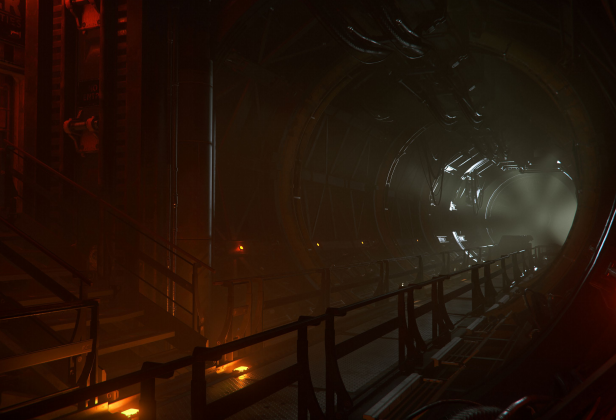
Location
Charon III
The Empire’s Light Conversion Centers of the Charon system were a large network of prisons constructed on Charon III by the Messers, starting with ImperatorLivia Messer III. These maximum-security facilities were reputed to be the most secure in the United Empire of Earth (UEE) and were used to house political dissidents opposed to the Messer regime. Following the fall of the Messers in 2792, the Governors Council of Charon III ordered that the prisons be torn down and published evidence of previously unproven atrocities committed against the prisoners by the former government. In the subsequent public uproar, Charon III voted to renounce its UEE recognition.
FoundationShortly after Livia Messer III ascended to Imperator in 2628, she presented a proposal to the Senate to build a special maximum-security prison under the sole jurisdiction of the Imperator in the sparsely populated state of Dellin on Charon III. The project would kickstart the struggling economy with new jobs and an influx of government funds. The Senate granted near-unanimous approval.
The first prison, completed in 2630, injected enough money into the economy that the population of Charon III sharply rose. By the time Imperator Corsen Messer V ascended in 2643, the once-rural colony in Dellin had become an urbanized center of commerce based around Livia’s prison. Corsen ordered the construction of more facilities in Dellin and its neighboring state Acheron after a meeting with the Governors Council of Charon III in 2644. The largest of these, Orville, became the central processing center for all new prisoners. The collective of facilities was named the Empire’s Light Conversion Centers (ELCC). During this time, Charon III’s economy boomed. In 2670, Corsen sent a decree to the Senate ordering the recognition of Charon III. A former Representative of Dellin, Gwen Czukay, was sworn in as the planet’s first Senator and the world was officially recognized under its new name, Haros.
Life in the PrisonsThe largest group of prisoners were political dissidents. These included deserters from the military, Xi’an sympathizers, former members of the press, protestors, social organizers, violent agitators, and even politicians. Anyone who acted or spoke against the edicts of the Messer government was in danger of being imprisoned on Haros. Convictions weren’t necessary; being arrested for a political crime was enough to put someone in Orville, ostensibly to await a fair trial. Many died there, waiting for hearings that were never granted. Contact was not allowed with the outside world.
Prisoners were put to work producing components for the UEE military or low-cost goods to be used by public welfare programs. Their meals were bland but nutritionally complete, and medical care was available to those who took ill so that they could continue to work until they died of old age or exhaustion. When Astrid Messer VII ascended to Imperator in 2697, standards of living in the ELCCs, already poor, plummeted. Funds meant for prisoner welfare were redirected to military resources. Malnutrition, dehydration, exhaustion, and disease became the leading causes of death.
Under Samuel Messer VIII, who ousted Astrid from power in 2701, a new decree set interment limits so that old-age prisoners would be killed to make room for new ones. The dead were interred in mass graves in the Dellin desert.
Rumors about the deplorable conditions in the ELCCs began to spread among the people of Haros, though no hard evidence could be found. Any workers suspected of leaking information were themselves at risk of imprisonment and all civilian protesters were incarcerated or killed, eventually quelling any kind of organized protest against the prisons. In 2751, the military began testing bioweapons on segments of Orville’s populace. Bodies buried in the desert leached chemicals and radiation into the already poor soil, fueling a new collective action among the populace of Haros. Though any dissent was brutally suppressed, protests increased in frequency for the following few decades.
LiberationWhen news of Imperator Linton Messer XI’s death in 2792 reached the populace of Haros, they stormed the prisons, liberating those inside. They arrested or killed any guards who hadn’t fled and broke into offices previously sealed off to the public, recovering centuries of documentation on acts of torture, murder, and other atrocities conducted by those who ran and guarded the prisons. First-hand accounts from the formerly incarcerated were compiled and sent to media organizations across the UEE. Senator Constance Whittlefield of Haros was arrested on charges of fraud. In 2795, the planet voted to renounce their recognition of the UEE and revert to their former designation of Charon III.
Even after the Messers were permanently ousted from power and a new, progressive government reformed under Imperator Erin Toi, Charon III refused to rejoin the UEE, citing their forced participation in crimes against Humanity as reason enough to permanently remain independent. The government then razed the prisons to the ground. Anti-UEE sentiment, common on Charon III, continues to be especially strong in Dellin.

